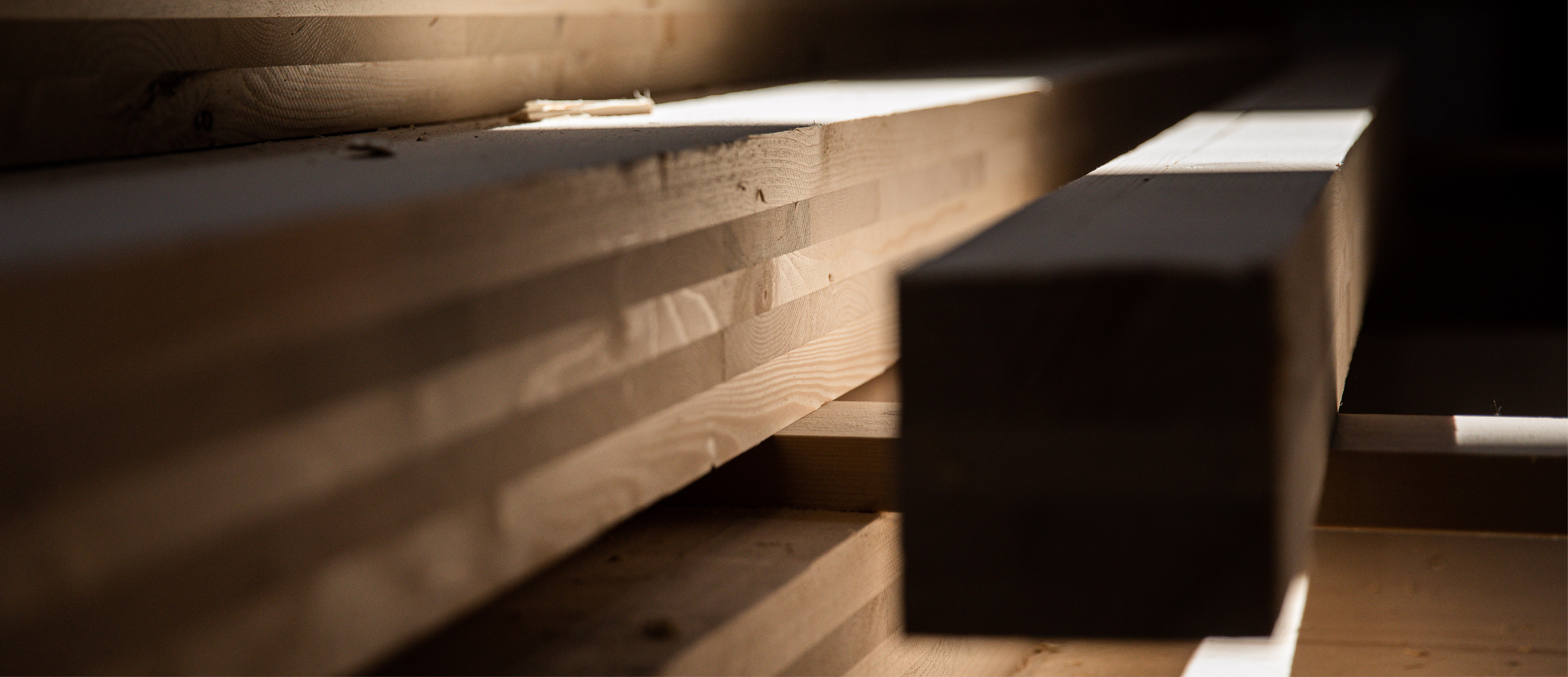Cross Laminated Timber (CLT) is a modern method of construction that has become more commonly used in the UK in the last few years. The material is lightweight but strong, and it can be constructed both on and offsite for use in developments up to 40m tall. As an added benefit, CLT has a significant positive effect on greenhouse gas emissions.
What is CLT?
CLT is a wood panel product made by gluing together layers of solid-sawn lumber. The layers are often arranged at right angles to each other and laminated under pressure, which achieves better structural integrity of the panel.
The material can be used in roofs, walls, floors or ceilings, and the thickness or length of the panel can easily be increased either by adding layers or joining panels together.
Environmental benefits
Estimated to be around 60% lower emissions than traditional construction
Reduction in construction time
Production of a tonne of concrete equates to around half a tonne of carbon dioxide, whereas sustainable forests for timber construction can be a net plus for greenhouse gas emissions
Contributes to government target to achieve net zero carbon emissions by 2050
Fire safety of CLT
Due to the relative infancy of CLT in the UK, there is still some debate around the fire safety of the product. On one hand, there are claims that timber “chars rather than burns” and could perform better than steel in a fire, but of course there have been timber buildings in recent years that have been significantly damaged or destroyed by fire. However, these destroyed buildings were timber framed, which may perform differently to CLT buildings. Recent studies have been commissioned to provide scientific evidence of how CLT will perform in a fire, and forums have been created to develop knowledge and understanding of the product. These forums provide a channel of communication for the consumer, insurance industry and government, so that all parties become comfortable with CLT as the material becomes more commonly used.
At present, the insurance industry is showing caution when considering terms for developments or completed buildings made with CLT. This is to be expected considering both the tragedy of Grenfell, which was exacerbated by the use of combustible cladding, and the lack of claims data with CLT in its infancy.
Key considerations for insurers
Height of building
How the CLT could be accessed and replaced if damaged
Percentage of CLT used within the overall construction of the buildingFire detection installation
A number of insurers are now offering significantly reduced capacity for buildings featuring CLT, which means that additional insurers are required to participate on the insurance programme and this generally results in increased premiums. If you are considering a development that will use CLT, or if you are purchasing a building where this material is present, early engagement with underwriters will be key in ensuring your cover is arranged in the most efficient and cost-effective way available. We are already working with developers and property owners on this where we know that this material is being/has been used.
Lockton are keeping informed of the ongoing developments in the use of CLT. As active participants in the aforementioned forum, we have a direct influence on how insurance products and negotiations will be shaped going forward.


